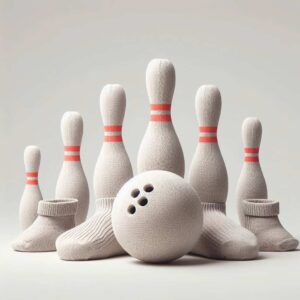When you think of bowling, what comes to mind? For many, it’s an image of a classic American pastime – affordable fun for people of all ages and backgrounds.
Bowling alleys have long been a gathering place for families, friends, and leagues filled with amateur enthusiasts from all walks of life. However, there’s also a perception that at its highest levels, bowling can be an expensive pursuit reserved for those with deeper pockets. So is bowling truly a rich person’s sport, or is it an accessible activity for the masses? The truth lies somewhere in the middle.
While bowling is generally considered an affordable and relatively inexpensive sport at the recreational level, there are aspects that can make it costly, especially when you move into the elite ranks of competitive amateur bowling and the professional circuits.
From high-end equipment to hefty tournament entry fees and travel costs, the financial barriers can increase substantially for those dreaming of bowling glory.
That said, many pathways and initiatives aim to keep bowling accessible and prevent it from becoming exclusionary based on socioeconomic status. Let’s take a closer look.
Is Bowling Truly an Affordable Sport for Most People?
One of bowling’s biggest selling points is that it doesn’t have to break the bank for casual participants. Unlike some sports that require pricey memberships or premium equipment just to get started, the basic costs of bowling are quite manageable for most budgets.
At your local alley, you’re typically looking at $3-$6 per game, plus a very affordable shoe rental fee that’s often only a few dollars. Many alleys even offer discount packages for multiple games.
If you decide to invest in your own basic ball and shoes, you can find decent entry-level equipment for $50-$150. Recreation centers and alleys aimed at families and casual bowlers also tend to offer reasonably-priced annual memberships that include discounted rates and other perks.
Of course, like any activity, costs can fluctuate based on your location and the specific bowling alley. Upscale alleys or those in major metropolitan areas tend to charge a premium. But in general, even budget-conscious individuals and families can find ways to go bowling for affordable fun without spending an arm and a leg.
Compared to many other popular recreational activities and sports, bowling stands out as a relatively cheap option for quality entertainment. A night at the movies, attending a concert, or participating in some athletic pursuits can easily cost far more, making bowling an attractive and accessible choice.
The Rising Costs at Higher Levels of Competition
While casual, recreational bowling can be gentle on wallets, the costs begin to escalate rapidly once you move into the elite ranks of competitive amateur bowling or the professional realm.
For serious amateur bowlers, one of the biggest expenditures is equipment. A top-tier ball designed for highly-skilled players can cost $200 or more. Given that competitive bowlers often have an Arsenal of 6-10 balls designed for different lane conditions and oil patterns, that price tag adds up quickly. Bags, shoes, accessories, and other gear further inflate the costs.
Then there are the travel expenses associated with competing in regional, national, and international tournaments. Between entry fees, transportation, lodging, and meals while traveling across the country or globe, these can be budget-busting expenses for passionate amateurs pursuing their bowling dreams.
The elite amateur bowlers and professionals also often invest in personal coaches to help fine-tune their skills and strategy. Elite-level coaching services don’t come cheap, easily running into the thousands or tens of thousands annually.
The Economics of Professional Bowling
For those who are able to ascend to the highest echelons of bowling as a professional, the financial equation evolves further. While there is significant prize money to be won, the overhead costs of being a touring professional are also substantial.
On the revenue side, while elite PBA (Professional Bowlers Association) events don’t offer multi-million dollar purses like some major professional sports, there is still significant money to be earned.
Prestigious PBA Tour events regularly offer six-figure prize pools, with winners taking home $50,000 to $100,000+. The PBA’s four major championships provide over $750,000 in total prize money annually.
Endorsements and sponsorships from ball, shoe, and accessory manufacturers can add lucrative income streams for the biggest stars as well.
However, capturing a share of those riches requires considerable investments. Joining the PBA Tour costs a $5,000 annual entry fee, not counting the hefty entry fees for each individual tournament, which can range from $1,000 to $10,000+ for majors and world championships.
Then there are the steep travel costs given the non-stop touring schedule required to earn a living as a professional bowler. Between airfare, hotels, rental cars/transportation, meals on the road, and other incidental expenses, it’s estimated that many pros spend $50,000 to $100,000+ annually just on travel.
Coaching is also a must for professionals looking to gain every possible technical and strategic advantage. The best bowling coaches command premium fees, with some elite coaches earning six-figures themselves in salaries from top pros or bowling brands.
Add it all up, and the total annual overhead for being a touring professional bowler can easily exceed $100,000 per year after accounting for travel, entry fees, equipment, coaching, and other expenses. That makes earning a substantial net profit on the pro tour extraordinarily difficult outside of that top echelon of elite players.
Does Socioeconomic Status Impact Success in Bowling?
Given the significant costs associated with reaching the highest levels of bowling, a highly-debated question is whether success in the sport is tied to a bowler’s socioeconomic background and means. Do wealthier individuals and families have meaningful advantages?
There’s certainly an argument to be made that money helps grease the skids on a path to bowling stardom. Access to high-quality coaching at a young age, participation in elite youth tournaments and developmental programs, and the ability to afford premium equipment and unlimited practice time at top-tier facilities could provide a substantial edge.
In contrast, athletes from more modest backgrounds may not be able to invest as heavily in personal coaching, top-of-the-line gear, or increased reps due to affordability limitations and the need to commit more time to work or studies.
However, it’s also important to note that bowling has produced star after star who emerged from very humble beginnings and blue-collar roots.
The PBA and record books are filled with success stories of players who picked up the game at modest establishments and alleyways before honing their skills through tireless independent practice and perseverance.
Ultimately, while money can lubricate the pathway in any sport, bowling may be more meritocratic than some other athletic endeavors where factors like raw athleticism, size, and strength are potentially more difficult to overcome through sheer dedication, regardless of means.
Keeping the Sport Accessible
Recognizing that cost is the biggest potential impediment to making bowling a truly accessible and inclusive sport for all, many initiatives and programs are aimed at lowering barriers to entry and participation.
On the grassroots level, most local bowling alleys and associations offer discounted youth leagues and development programs aimed at getting kids from all backgrounds involved in the sport from an early age at affordable costs.
These can be great ways for kids to not only learn the game’s fundamentals but also gain team-building skills, experience a spirit of competition, and potentially unearth raw talent worthy of further cultivation.
Schools can also play a pivotal role, as hundreds of high schools and colleges field competitive teams with relatively low participation costs compared to some other athletics offerings. Keeping bowling as an affordable option in scholastic sports helps prevent it from becoming exclusionary.
For talented amateur bowlers eyeing that leap to the next levels of elite competitiveness, equipment manufacturers and governing bodies offer scholarships, grants, and subsidized coaching to help ensure that money isn’t the sole determining factor in realizing one’s full potential.
And while entry fees for major championships can be steep, the prize money distributions ensure competitors are rewarded for success and can reinvest those winnings back into expensive training and continued participation.
Sponsorships also significantly shape bowling’s accessibility. While bowling doesn’t offer massive endorsement deals like major professional sports, sponsorships from ball manufacturers, accessory brands, and corporate partners help offset costs for top amateurs and pros alike while enabling them to chase their dreams without being hindered by finances.
These sponsorship contributions, ranging from gear/merchandise to travel stipends and endorsement income, can provide a crucial pipeline of funding for elite bowlers that increases affordability.
Conclusion
So is bowling definitively a rich person’s sport reserved only for those with ample means? The answer is: not necessarily, but financial resources certainly provide meaningful advantages, especially at the highest competitive levels.
For casual, recreational bowlers, it remains one of the most affordable athletic activities around. With basic equipment and game costs of just a few dollars, there are minimal barriers to entry regardless of socioeconomic status.
However, the costs escalate rapidly for those pursuing bowling stardom as elite amateurs and professionals. High-end gear, coaching, travel, and entry fees can run into the six-figures annually. While passion and talent are prerequisites, money greases the wheels to the elite ranks.
Bowling straddles a line between accessibility at the grassroots level and exclusivity based on means at the highest echelons of competition. The hope is that through continued initiatives and pathways, the sport maintains its approachability while still rewarding those talented and fortunate enough to compete professionally.
At its core, bowling welcomes players from all backgrounds. But significant financial backing is often required to reach the absolute pinnacle of the sport. Finding that ideal balance is the ultimate goal for this beloved pastime.





